We all would like to give our leather shoes extra mileage, wouldn’t we? Especially that favorite pair of shell cordovan leather shoes or dress boots that you have grown fond of.
There’s a saying among footwear aficionados that premium leather shoes don’t age with time, they evolve. They fit around your feet, become familiar with your walking habits and the spots you press as you take your carefully paced steps.
Leather shoes, as much as relationships, respond well to care and attention. Give them a dose of tender loving care and they will be devoted to you for years to come.
But the elements are merciless and your shoes are exposed. So how do you protect them?

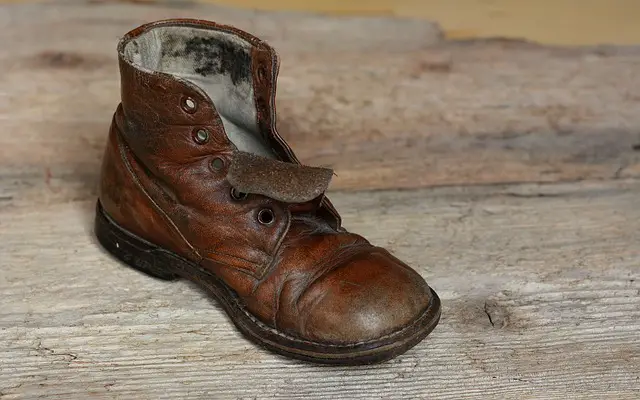
Which looks like something that might have inspired Van Gogh.
In the leather footwear market where the worldwide revenue was US$162 billion in 2018, both the manufacturing and caring of leather shoes have seen great changes. Every pair of leather shoes you buy is an investment, so naturally, you’d want to protect your investment.
The Six Principles of Leather Shoes Care
When it comes to protecting leather, the rules of engagement are universally the same. Whether you like to wear your dress shoes shiny and sparkling clean or you prefer to go with the rugged look of working boots, you still want those shoes to last.
This is why the shoe overlords, in their wisdom, have set these golden rules to help you care for your leather shoes like they were a family heirloom.
No Excessive Heat or Sunlight
To protect your precious pair of leather shoes from the ravages of time, you need to cherish them as you would your firstborn. Just as you wouldn’t let your baby near the fire or out in the searing sun, your shoes need to be shielded from these destructive forces as well.
But why would you want to expose your shoes to this harsh treatment?
Say, for example, you got your shoes soaked while you were recklessly walking out under the rain. Now your shoes weigh a ton and to get them dry you put them in front of a hairdryer. Bad Idea.

Wet leather, when dried up too fast with heat, tends to shrink and crack. So keep the wet shoes in a well-ventilated place and let them dry by themselves.
As for sunlight, it’s also the bane of a good pair of leather shoes. The UV rays tend to speed up the fading of natural leather which can shorten the lifespan of your shoes and make them look much older than they really are.
Give it Air
Leather needs air and plenty of it. When you wear your shoes and your feet sweat in them, the humidity and warmth might cause a breakout of mold and mildew.
But when you leave your shoes to ventilate, the air dries up the moisture in the pores of the leather and prevents the leather baddies like fungus and rot from ruining the shoes.
In the same way, if you want to store your shoes, don’t keep them in plastic bags. You’re just sealing their fate, so to speak. Instead, you should store them in ventilated fabrics such as pillowcases or a travel bag.
Say No to Waterproofing
In most cases, waterproofing your shoes is overkill. Genuine leather can handle itself well in rain, snow, and even a mudslide. Unless you’re worried about your own feet, water doesn’t damage leather shoes.
So why do some shoes boast about being waterproof? They’re most likely for people who hike or work in swamps, rivers, or snow-covered areas. They just need waterproof shoes to keep their feet dry.
In general, waterproofing agents tend to seal off the natural pores of the leather which isn’t always a good thing. If you aren’t afraid to get your feet wet, or at least a little damp, then you won’t need waterproof leather shoes.

Regular Clean up
Since leather needs to breathe, dirt, grime, and dust particles tend to block its air passageways. Think of leather as living skin. When your pores get blocked, boils fester. But in the case of dirty leather shoes, it’s mold that festers.
So after you take off your shoes, give them a quick rub with a damp piece of cloth. Those couple of minutes will go along way into prolonging the life of the shoes. This prevents premature cracks and wrinkles and keeps the shoe looking younger and healthier.
Try before you Apply
When it comes to giving your shoes the lavish treatment, there’s nothing like pampering them with creams and polishes. There are other treatments as we’ll see later. But most people prefer to use those two.
And they’re mostly fine. Except when they’re not. For one thing, the color of the polish or the cream can be deceptive. After you apply it, you might find that your shoes have got a new unintended look or patina that totally doesn’t suit them.
A word to the wise. Test the polish on a small area of the shoe, preferably toward the back, and give it a day to dry off. If you still like the color, go ahead and use it. Else, you can test another one and hope it will be the right one.
Natural is Better
Still with polishes and creams and the way they can make a pair of shoes in the prime of its life look old, tired, and ready to give up. You can either go with the au natural option or choose neutral colors.
Natural colors are either black or brown. The black polish will look fine on black shoes. But what about all the 50 shades of brown? How can you possibly match those? To avoid confusion, stick with neutral colors. They don’t change the hue of the shoes and your burnt umber shoes will always look that after half a dozen polishes.
Common Leather Treatments
When you splurge on an expensive pair of shoes, you really expect to have a long-term relationship with them. This is not something casual. Not at this price, anyway.
And to make sure your relationship lasts, you invest in a good leather treatment solution. At any store, the shoe care section will always have a dazzling array of choices and brands. So which one to pick? Here’s a rundown of the most common ones.
A Damp Cloth
The most common way to care for your shoes is to give them the damp cloth treatment. It won’t cost you much and as long as the cloth is clean, it will get the job done. By cleaning your shoes regularly, you prevent dirt from piling up and blocking the leather’s breathing airways.
Avoid using soap or any liquids besides water. The chemicals are not very friendly to leather and you’ll be doing your shoes a disservice. Some people wipe their shoes once a week while others faithfully do it every time they put on the shoes. This treatment works for almost all leather types.
Polish
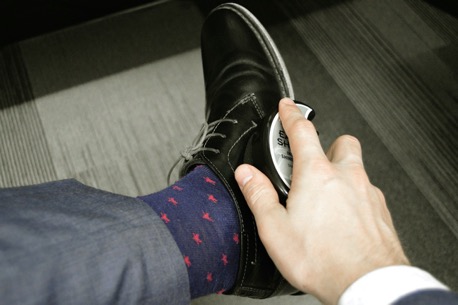
People choose polish because it gives their dress shoes a shine, unlike any other leather treatment. But this treatment is only skin deep. In other words, this is a visual makeup that has limited functionality when it comes to protecting the leather.
Some polishes have moisturizers to reinvigorate the leather as well. So it might be worth checking different brands and see what they can do to your expensive leather shoes besides making them glitter.
Cream / Conditioner
Because leather dries up faster than a lizard’s hide in the Mojave Desert, you’ll need to moisturize it more often to avoid premature wrinkles and cracks. The way to apply the cream is the same way you’d rub a moisturizer on your own skin. Dab gently and let the cream do its magic.
Keep in mind that creams don’t give you shiny shoes nor do they make them waterproof. And in most cases, you won’t need to apply the cream more than once or twice a year. But if you live in a hot and dry region, moisturizing the shoes once every 3 months sounds about right.
Spray and Wax
People use sprays to waterproof their shoes. That’s only needed when you expect to wade in a creek or plod through the snow on a regular basis. Either spray or wax can be used although they do impact the look and quality of the leather. For the most part, you won’t need to use either of them.
Types of Leather Shoes And How to Tune them Up
Leather comes in different shapes, forms, textures, and colors. Since our species became bipedal, we’ve been experimenting with different materials to cover, protect, and glamorize our glorified feet. From straw to wood and even metal, only leather has the versatility and convenience that is required for our footwear.
But as you’ll notice once you step into a shore store, leather is an umbrella term used to cover a wide variety of types of products. So let’s cover the most common types and see how you can take care of each one.
Patent Leather
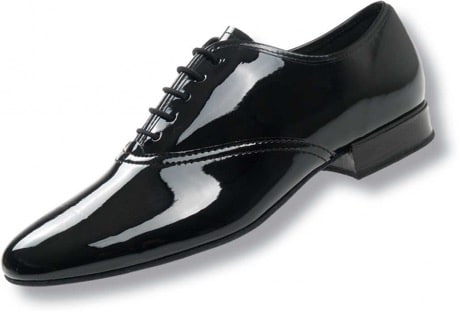
We start with patent leather because it’s a popular choice among dress shoe fans everywhere. It’s eye-catching and along with a black-tie gives you the sharp look you seek when you’re trying to impress.
But this sharp look comes at a price. Patent leather shoes are easy to scratch and scuff even when you’re on your way to strut your stuff on the red carpet. To fix that, you’ll need a little bit of vaseline to gently smooth out scuffs and scratches.
The heel is also vulnerable. but that’s nothing that some nail polish won’t straighten out. In general, these shoes are for special occasions and not for everyday use. So, besides chamois cloth and a patent leather cleaner, you won’t need much else to keep them in perfect condition.
Pebbled Leather
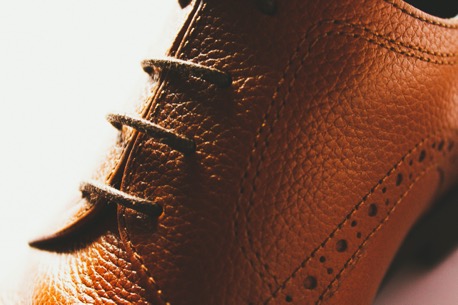
Pebbled leather is sturdy and durable. The shoes are easy to identify by the grainy texture of the surface. And they’re easy to maintain as well. Just use your trusty damp cloth to wipe all dust and dirt off the shoes.
To keep the leather healthy and fresh-looking, give it the conditioner treatment. Oil-based creams will get the job done. And for an extra-smart look use a beeswax-based polish.
Pull Up Leather
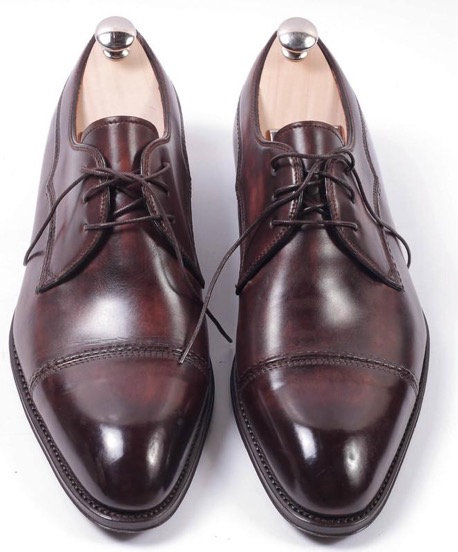
Pull up leather has the magic ability of self-healing. It also has an oily feel to it when you run your finger over the leather. This probably accounts for its self-healing abilities. To test it for yourself, scratch the back of the shoe with your fingernail to make a mark. Now rub it with your finger and watch the scratch disappear.
To keep your pull up leather shoes in great condition for years to come, you’ll need to apply a conditioner from time to time. A little bit of beeswax seals the leather and keeps that healthy oily feel about it. Also, remember to clean off the dust with a microfiber cloth after every use.
Suede Leather
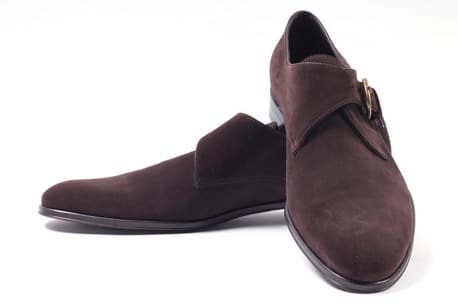
Suede doesn’t come only in blue, it actually has many colors and blue is probably the least favorite of them. Your suede leather shoes are known for being high-maintenance and get a bit cranky sometimes. They also get that bleached look if you don’t care for them properly. Or if you care for them too much, for that matter.
To strike a good balance and keep those fussy shoes going for a long time, try not to wear them too often. Rotate them with other shoes and keep them for special occasions. You’ll need a suede brush, suede cleaner, a rubber eraser, and a protective suede spray to show them how much you care.
Vegetable Tanned Leather
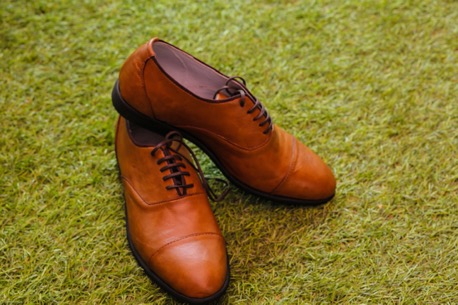
Named after its non-chemical method of tanning, this leather type usually acquires a unique light cinnamon color which is favored by many dress shoe designers. The absence of chemicals when treating the leather allows it to age gracefully and serve you for many long and illustrious years.
The leather has a supple feel about it, and you’ll need to care for it to maintain this quality. If you let it dry out, it will lose both its distinguishing color and sheen. Also, water is its sworn enemy so, wearing them in rainy weather or when it snows is out of the question.
To care for this leather, you’ll need a horsehair brush that doesn’t scratch, a leather cleaner, a piece of microfiber cloth, an oil-based conditioner, and a beeswax-based polish.
Cordovan Leather
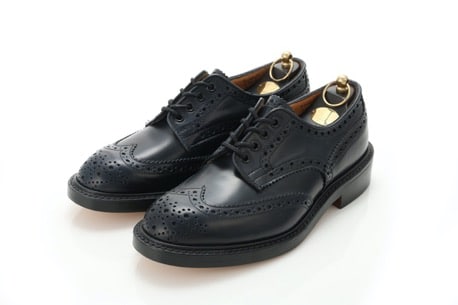
A highly valued and well-sought after type of leather that’s made from horsehide. Because of its high price and rarity, you can only order it in certain footwear stores. Cordovan leather shoes are famous for their high quality, luster, and unmistakable patina.
These exceptional qualities make caring for this type of leather rather difficult. You’ll need to invest in a top-quality brand specifically designed for cordovan leather. Avoid using too much conditioner or wax and never under any circumstances use saddle soap or any chemical-based cleaners. Instead, you should use a mink-oil based polish.
Chamois Leather
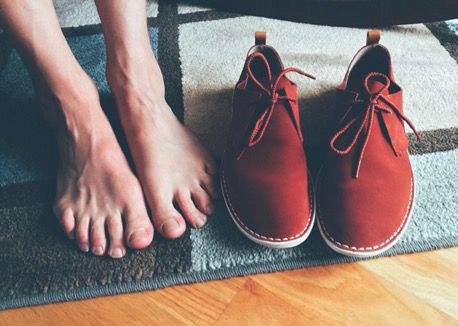
When you own a pair of chamois leather shoes you’re in for a big maintenance adventure. Just like their kin, suede shoes, these types of shoes are made from lambskin or goatskin and they detest water. They’re fuzzy to the touch but a little finicky when it’s time to clean them.
You’ll need a suede brush to clean off the dirt. If that doesn’t help, try a rubber eraser. Always rub with the grain not against it. A protective suede spray will keep the fuzzy texture intact. Also, remember not to wear them too much.
Calfskin Leather
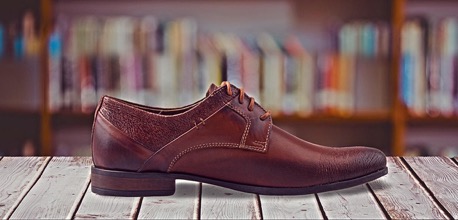
Similar to patent leather, calfskin leather shoes are preferred for their shiny finish. However, once you wear these shoes a few times, you’ll notice it’s not easy to maintain that shine. They also require a lot of care and attention to give you a few extra years of service.
For maintenance, you’ll need a brush, preferably a horsehair one, beeswax polish and a good-quality conditioner. To achieve that sparkling shine, sprinkle a few drops of warm water on the leather before you apply the polish. Then, work your microfiber cloth in tight circles and watch the leather open up with a glittery smile.
How to Treat New Shoes
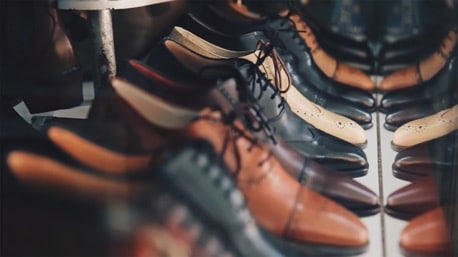
New shoes are more like first dates. You’re always at your best behavior, dancing attendance, and showing them what an attentive person you are. As the first date leads to subsequent dates and the first kiss gets you in bed, you don’t stop cherishing the relationship or showering your partner with attention.
Shoes require this same amount of care. The more loving you are toward them the longer they will stay with you through thick and thin. Here are a few pointers to get your affair with your shoes to a good start.
- Wear your new shoes for 2 or 3 hours at a time until they get familiar with your feet.
- Don’t get new shoes near the water. And if they do get wet, use a shoe tree to dry them out naturally.
- Always lay the shoes on their side to dry not on their sole.
- Protect the back of the shoe by using a shoehorn. Older shoes have weak backs that tend to collapse.
- Leather shoes need time to rest and recover. Don’t wear the same shoes for two days in a row.
- Give your shoes a good cleaning after each use and apply a quality conditioner to rejuvenate the leather.
- Don’t use stick-on soles as they distort the natural balance of the shoes and reduce their comfort and longevity.
Your leather shoes are a good investment. Splashing on a good shoe care kit will help you build a long-lasting relationship with your footwear. With regular care, the shoes will get more comfortable with your feet. And that’s when you realize that these shoes are a keeper and are in it for the long haul.
Related Articles:
- Best Walking Shoes for Elderly Women
- Best Rocker Bottom Shoes for Women
- The Best Shoes for Doctors
- Best Driving Shoes for Women
- Best Soft Sole Shoes
- Best Zumba Shoes
- Best Shoes for Jumping Rope
